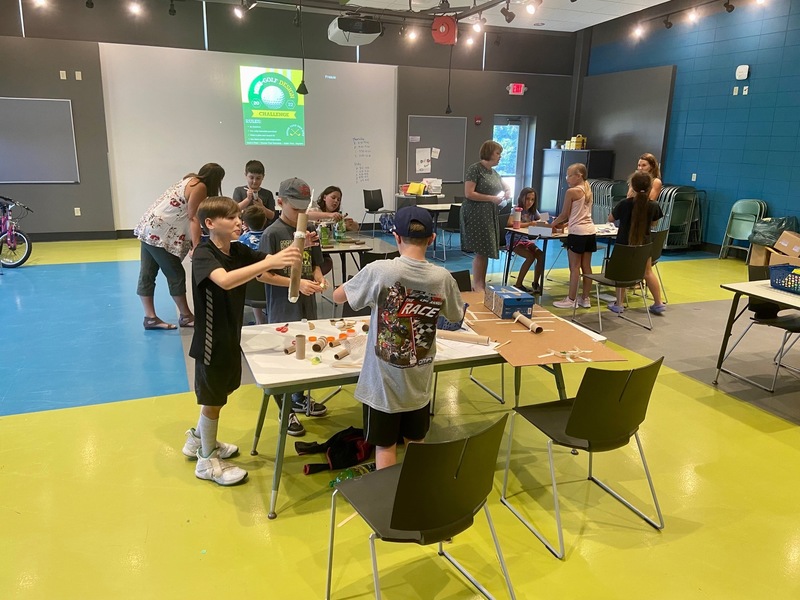The fifth graders participating in a mini-golf design challenge had four simple rules: Be creative, use only materials provided, make and record a plan, and use kind words and compromise.
Shortly after Sara Bertelsen, a biology teacher at Geneseo High School, provided an introduction based on STEM principles (science, technology, engineering and mathematics), the summer school students in attendance thanks to ESSER III funding raced to gather their materials and got to work.
Each group’s design was creative and unique, and Bertelsen, who wanted her class to gain an early understanding of the engineering design process and growth mindset, was pleased with the results.
“Before the students started building, we discussed what an engineer does and I tried to emphasize the idea of problem solving, testing, and rebuilding if things don’t go as planned,” Bertelsen explained. “I heard a lot of great conversations between students using STEM terms.”
The STEM classes were held during summer school classes for kindergarten through sixth grade at Millikin Elementary. While Bertelsen normally teaches at GHS, she previously coached LEGO League teams with fourth through seventh graders. Being in a classroom with the younger students, however, was a new experience for her.
“I spoke with a few lower elementary teachers and was given great advice to make sure I have plenty of things to do to keep them engaged,” Bertelsen explained. “Luckily, STEM lends itself well to being naturally engaging so I was able to rely on that, too.”
Other summer school projects from the first week of Bertelsen’s STEM classes included kindergarten students being tasked with designing and building a spoon to help Grumpy Toad (a character from the book “Pete the Cat and the Missing Cupcakes”) make new cupcakes; first and second graders reading the book “Peg & Cat and the Pizza Problem” and figuring out how to get pizzas home on a bicycle; and third and fourth graders taking the pizza problem one step further by coming up with a way to also transport ice cream—without melting and spilling.
This week, her classes will work with a set of small robot cars called Sphero Indi—purchased thanks to a grant from the Geneseo Education Foundation—to learn how the cars respond to their different color tiles, while the third through sixth graders will work with similar but more sophisticated robots aimed to provide simple driving and coding choices for early learners.
Bertelsen sees great value in not only offering STEM-focused classes for all ages, but also tying those principles in to the bigger educational picture.
“I think it is important for students to be exposed to a learning environment that encourages collaboration and recognition that STEM really is everywhere,” Bertelsen stated. “It doesn’t need to be a specific STEM class at all grade levels, but the cross curricular connections are incredibly powerful.
“It shouldn’t be a one-and-done situation in which we say, ‘Well, we’ve done our STEM for the quarter, so we’re done now,’” Bertelsen added. “Instead, we should consistently incorporate experiences that encourage the use of inquiry-based learning, technology, and the engineering design process within our current curriculum.”
Bertelsen’s hopes may soon become a reality. Geneseo’s school district is planning to extend STEM opportunities throughout its buildings in the coming years—including as an element of Project Lead the Way—thanks in part to multiple grants from local foundations.
Future updates about the STEM expansion initiative will be shared with stakeholders and the community once those plans are finalized and approved by the Board of Education.


